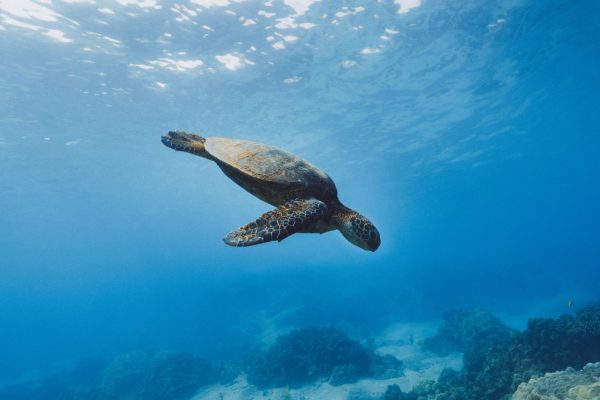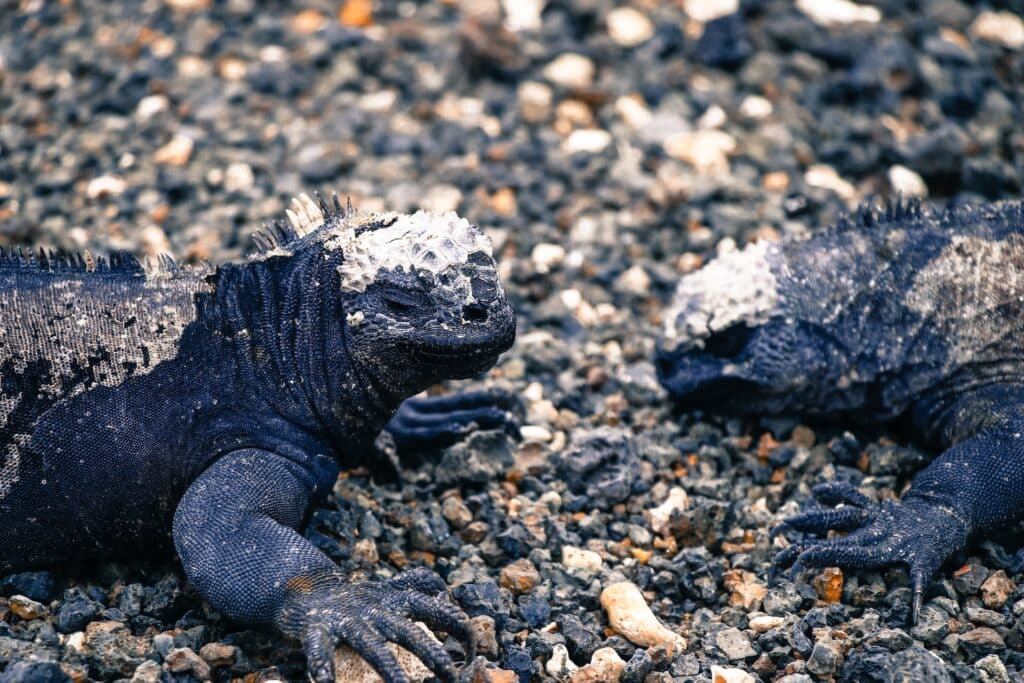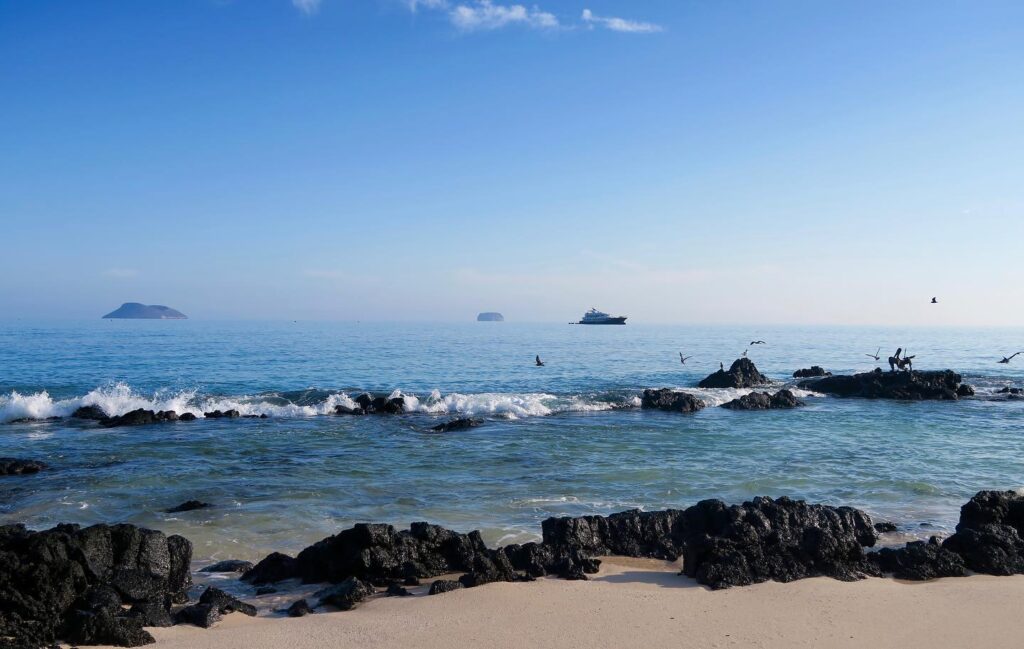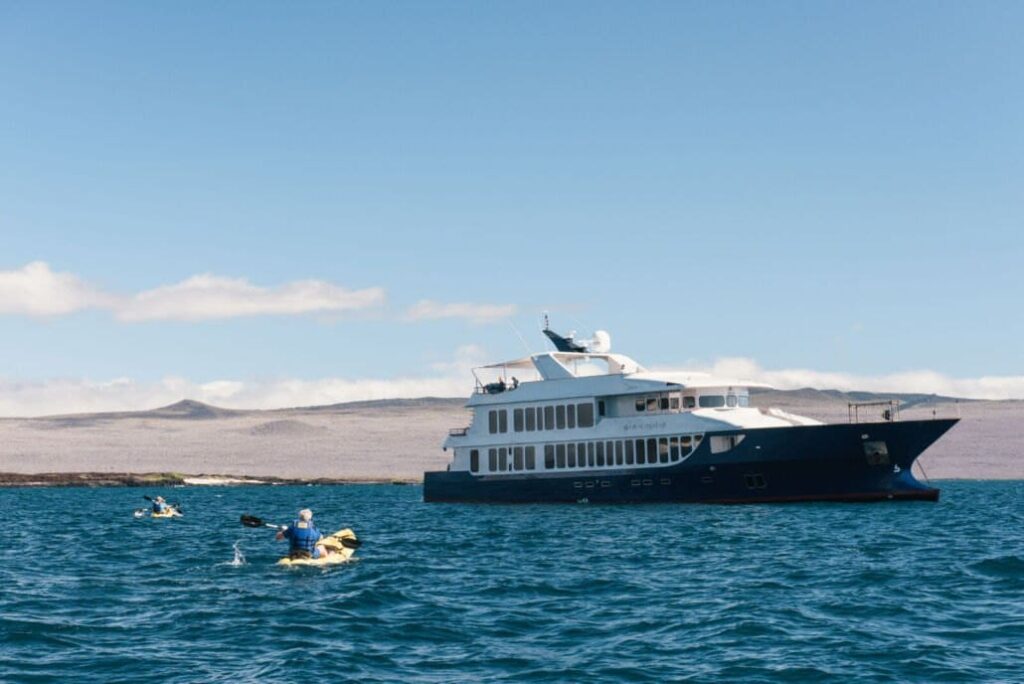
When building a Galapagos itinerary, the main thing to note is that there isn’t a particular high or low season for the islands. Instead, there is a wet and dry season, but even these both offer a wonderful experience for different reasons.
Between December and January is a good time to visit the Galapagos as it is the start of the wet season and the temperatures begin to rise (although it does remain moderate all year round) and tropical storms descend on the islands.
Dry season runs from July to January in the Galapagos, bringing with it cooler temperatures and lush green vegetation that comes alive. If you’re looking from prime birdlife viewing, dry season attracts seabirds and Galapagos penguins among other marine life and birds.
People choose to visit the Galapagos thanks to its variety of unique wildlife, from giant nesting tortoises to lava lizards in mating season and even sea lion pups playing on the sandy beaches.
The wet season in the Galapagos runs from January to July and brings with it higher temperatures, tropical storms and warmer waters perfect for snorkelling and scuba-diving.
The Galapagos is a year round destination making it ideal for a Winter or Summer vacation.
If you’re looking to visit the Galapagos in the winter, travelling in December and January does coincide with the highest tourist numbers for the year, however there is also prime wildlife spotting during this time.
Among some of the highlights, giant tortoises begin to hatch and land iguanas start their mating rituals, head to Isabela island for a look at this fascinating scene up close.

Throughout the year, the wildlife of the Galapagos grows and evolves with the seasons. Starting in January, land iguanas begin to mate and land birds begin to nest. In February, head to Santa Cruz island to watch marine iguanas begin their nest before they move to Seymour Island and Fernandina Island in March.
Come April, the Waved Albatross flocks will have migrated to Espanola island and in May the blue footed booby will display their mating dance on Seymour island.
If you’re looking to get up close and personal with sea lions during your time in the Galapagos, mating season begins across the archipelago in May with pups being born in August across the central and western islands. They become more inquisitive of humans as they get older and you’ll find around November they may begin to approach you as your explore their native habitat
Whales can be spotted throughout the year in the Galapagos with whale sharks swimming towards the north west of the islands in June, in July they move towards Wolf and Darwin islands and in September, humpback whales can be spotted off the northwestern islands.

Thanks to the Galapagos temperate climate, a lot of the layers you will need to pack for your time on the islands will be relatively lightweight. A selection of short-sleeved t-shirts, shorts and swimwear should make up the most of your suitcase whilst you should also consider bringing a light waterproof to protect you against those tropical storms. To make your experience the best it can be, your wildlife spotting will only be made better with a pair of portable binoculars and capture those moments with an under-water camera that can truly keep those memories alive.
A visit to the Galapagos will of course require sun protection so don’t forget your sun hat and sunscreen, we would recommend purchasing reef-friendly sunscreen in order to protect the natural beauty of this wonderful archipelago.

The Galapagos are situated off the coast of Ecuador and therefore your time there can also be paired with an Andes adventure or time exploring the mainland of South America, these areas tend to be at their best during May to September during their dry season.
Once you have landed in Ecuador, the only way to get to the Galapagos islands is by another connecting flight. Once in the Galapagos you will be able to board your boat that can then take you through the archipelago for the duration of your trip.

Our travel design process starts with you and your ideas, each trip created from a blank piece of paper.
Our Latin America specialists have created a selection of example itineraries to provide a sense of what can be crafted for you in Ecuador and the Galapagos Islands.
12 Day Itinerary
Guide Price: £15,600pp
Guide Price: $19,800pp
Starting in the capital of Ecuador, Quito, to the Andes and onto the Galapagos Islands, discover the rich flavours of Ecuadorian cuisine from the markets to five star dining.
Set sail on a luxury expedition around the scenic Galapagos islands, where a variety of activities on the crystal-clear waters await, from snorkelling to surfing. Witness the islands’ rich biodiversity, thriving both above and below the waters.
8 Day Itinerary
Guide Price: £7,900pp
Guide Price: $9,500pp
Embark on an unforgettable journey to the Galapagos to marvel at a world teeming with wildlife, from playful sea lions to a diverse bird species, all while learning about the history and customs in these incredible islands.

SIGN UP